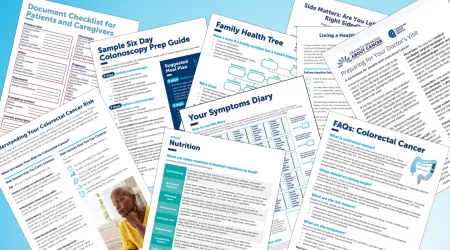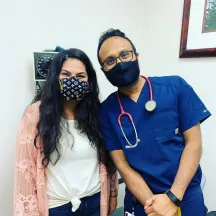Fecal immunochemical test (FIT): the pros, cons, and process
A fecal immune test (FIT) is an FDA-approved at-home colon cancer screening test that your doctor may prescribe for you. Although colonoscopy is the gold standard, a FIT is an option some people.
How it works
The fecal immunochemical test (FIT), also called an immunochemical fecal occult blood test (iFOBT), is a stool test that also detects occult (hidden) blood in the stool. It is also known as a hemmocult test.
Detecting blood in the stool is important because it can be a sign of precancerous polyps or colorectal cancer. Blood vessels on the surface of larger polyps or cancers are often fragile and may be damaged by passing stool. The damaged blood vessels usually release a small amount of blood into the stool. This blood is often not visible to the naked eye, which is why these tests are helpful.
Does screening really prevent cancer?

Step by step
- Position sample collection paper across rim of toilet bowl
- Make bowel movement onto collection paper
- Use kit applicator to collect sample and insert in collection tube
- Insert specimen pouch into return envelope and seal
- Immediately send sample packet to testing address by mail

The pros
- Easy to use
- No special changes to diets or medicines
- No liquids/prep to drink
- Inexpensive
- Covered by most insurance
- Done in privacy of your home

The cons
- Patients may find test unpleasant to do
- Has a high false-positive rate
- Does not provide a view of the colon and rectum
- May miss polyps or tumors that bleed in small amount or not at all
- Tests may result incorrectly in warm climates or with postal delays
- Must be repeated every year
- Follow-up colonoscopy after a positive test may not be covered by insurance
Other ways to screen
Flexible sigmoidoscopyTop resources

Legislation introduced to address young-onset CRC
Explore the urgent need for the Colorectal Cancer Early Detection Act (HR 7714), legislation aimed at combating the rising incidence of colorectal cancer among younger adults through enhanced screening, education, and research.

Colorectal cancer resources for learning and sharing
Whether personally impacted by colorectal cancer (CRC), supporting a loved one, or dedicated to educating and empowering others, these downloadable and printable resources can help.

Dak Prescott joins Alliance to ‘LEAD FROM BEHIND’
Initiative aims to reduce stigma and educate about screening choices, as the Colorectal Cancer Alliance launches a health equity fund to decrease disparities.





